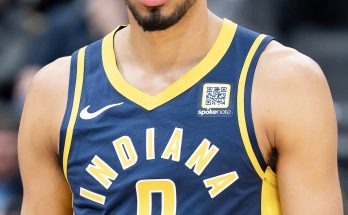In the ever-intense world of college football recruiting, the battle for elite talent is as fierce as the games themselves. Programs across the nation are constantly jockeying to land the next generation of stars who could define the future of their teams. Among the most dramatic and attention-grabbing moves in recent months is the University of Georgia’s aggressive attempt to lure away a star recruit who had originally committed to a rival powerhouse. This bold push not only underscores Georgia’s determination to maintain and elevate its standing as one of college football’s elite programs but also highlights the fluid and highly competitive nature of recruiting in today’s game.
The recruit at the center of this escalating tug-of-war is a highly touted athlete widely regarded as one of the most promising prospects in the nation. His commitment to the rival program initially seemed like a significant win for that school, promising to bolster their roster with a player capable of making an immediate impact. However, as recruiting cycles unfold, it is never quite over until the ink is dry on National Signing Day. Georgia’s move to attempt to sway this star commit away reflects a strategic approach that goes beyond just securing talent; it’s about sending a message to competitors and fans alike that no commitment is safe and that the Bulldogs will leave no stone unturned in their quest for excellence.
What makes this pursuit particularly fascinating is the backdrop against which it is taking place. Georgia, under head coach Kirby Smart, has steadily built a powerhouse program characterized by top-tier recruiting classes, innovative coaching, and championship aspirations. Their recent successes, including a national championship victory, have only heightened expectations and increased their visibility as a destination for elite prospects. Meanwhile, the rival program, which has enjoyed its own share of recruiting victories and boasts a rich football tradition, now finds itself under pressure not only to keep this prized recruit but also to defend its reputation and standing in the highly competitive Southeastern Conference (SEC) landscape.
At the heart of Georgia’s strategy is an emphasis on relationships and personalized attention. Recruiting is as much about trust, vision, and fit as it is about talent alone. Georgia’s recruiting staff, including key position coaches and recruiting coordinators, have made multiple in-person visits, engaging not only the recruit but also his family and close circle of advisors. These visits have been designed to demonstrate the depth of Georgia’s commitment to his development both on and off the field. From campus tours highlighting the state-of-the-art facilities to meetings with academic advisors and former players, the Bulldogs are painting a comprehensive picture of the opportunities that await should he choose to flip his commitment.
Moreover, Georgia’s on-field success and track record of developing NFL-caliber talent are leveraged heavily in their pitch. The promise of playing in front of passionate fans in a program that regularly contends for conference and national titles is a compelling proposition for any top recruit. Georgia’s coaching staff has also emphasized how the player’s skill set perfectly fits into their scheme, promising a significant role early in his college career. The ability to project this player as a cornerstone of the team’s future plans is a powerful incentive, especially when contrasted with the uncertain playing time or fit he might experience elsewhere.
But beyond the practical and strategic components, Georgia’s push to poach this star commit taps into the emotional and aspirational side of recruiting. The Bulldogs are selling not just a football program but a lifestyle, a family, and a legacy. For many recruits, the decision is not merely about the Xs and Os but about where they can see themselves growing as individuals and leaders. Georgia’s outreach has included stories and testimonials from former players who have gone on to successful professional careers, community leaders who emphasize the Bulldogs’ impact beyond the gridiron, and even alumni who reinforce the lifelong connections that Georgia football fosters.
The rival program, naturally, has not taken this challenge lightly. Their own coaching staff and recruiting team have doubled down on efforts to reaffirm the recruit’s initial commitment. From enhanced communication and tailored visits to showcasing their own development pathways and success stories, they are clearly determined to hold on to their prized asset. This back-and-forth battle highlights the high stakes and the razor-thin margins that define modern college recruiting. Every visit, every phone call, every social media interaction can sway a recruit’s decision, making the process both exciting and nerve-wracking for all parties involved.
In addition to the direct recruiting battle, this situation has broader implications for the SEC landscape. Georgia’s aggressive pursuit signals to other programs within the conference—and indeed nationally—that the Bulldogs are not content to rest on their laurels. They are actively seeking to expand their talent pool and disrupt the status quo. Such moves can trigger a ripple effect, prompting other teams to elevate their recruiting efforts, invest more in relationship-building, and perhaps reconsider how they evaluate and secure verbal commitments.
It’s also worth noting the role of NIL (Name, Image, and Likeness) opportunities in this dynamic. With college athletes now able to monetize their personal brand, programs like Georgia have an edge in markets where there are robust NIL ecosystems and strong booster networks. The prospect of lucrative local and regional endorsement deals can be a deciding factor for recruits weighing their options. Georgia’s recruiters have been careful to underscore the opportunities available in Athens and beyond, positioning the university not just as a football powerhouse but as a platform for financial and personal growth.
The story of Georgia’s push to poach a rival’s star commit serves as a microcosm of the evolving recruiting landscape—one that is faster-paced, more competitive, and increasingly strategic. It also highlights the importance of adaptability and persistence in recruiting. For Georgia, this is not simply about landing one player; it’s about reinforcing a culture of excellence and setting a tone that the Bulldogs will go to any lengths to secure the best talent.
Ultimately, the recruit’s decision will be a major talking point leading up to National Signing Day. Will he honor his original commitment or make a high-profile switch that shakes up the recruiting world? Regardless of the outcome, Georgia’s bold move underscores the program’s ambition and willingness to challenge rivals head-on in the fight for college football supremacy.
As fans, analysts, and insiders continue to monitor this unfolding story, it’s clear that college football recruiting remains one of the most thrilling and dynamic aspects of the sport. Georgia’s aggressive pursuit of a rival’s star commit is just the latest example of how programs are innovating and competing fiercely to build championship teams and create lasting legacies. The next few weeks promise to be critical, and the decisions made will echo for years to come on fields across the nation.



